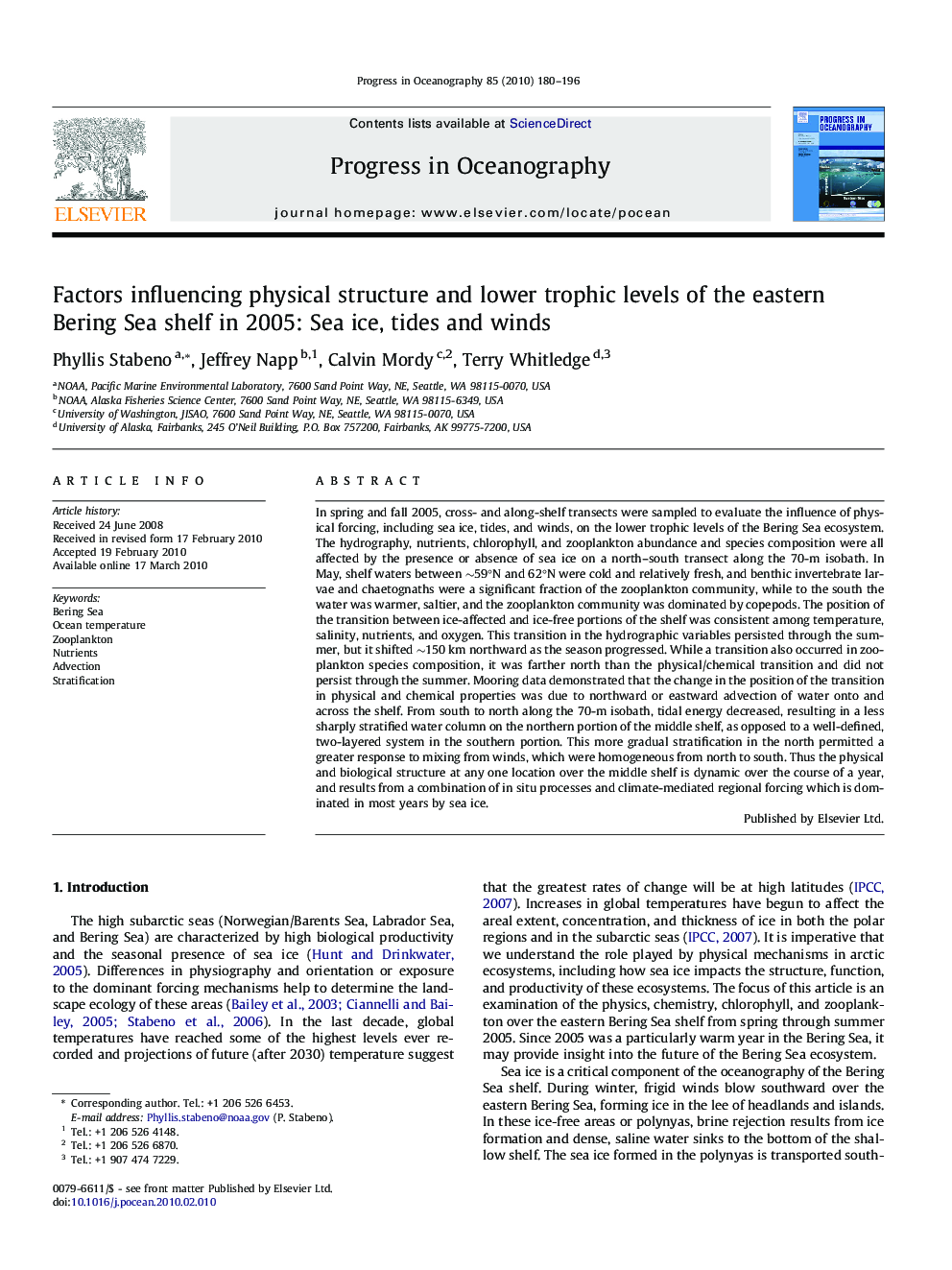| Article ID | Journal | Published Year | Pages | File Type |
|---|---|---|---|---|
| 4553521 | Progress in Oceanography | 2010 | 17 Pages |
In spring and fall 2005, cross- and along-shelf transects were sampled to evaluate the influence of physical forcing, including sea ice, tides, and winds, on the lower trophic levels of the Bering Sea ecosystem. The hydrography, nutrients, chlorophyll, and zooplankton abundance and species composition were all affected by the presence or absence of sea ice on a north–south transect along the 70-m isobath. In May, shelf waters between ∼59°N and 62°N were cold and relatively fresh, and benthic invertebrate larvae and chaetognaths were a significant fraction of the zooplankton community, while to the south the water was warmer, saltier, and the zooplankton community was dominated by copepods. The position of the transition between ice-affected and ice-free portions of the shelf was consistent among temperature, salinity, nutrients, and oxygen. This transition in the hydrographic variables persisted through the summer, but it shifted ∼150 km northward as the season progressed. While a transition also occurred in zooplankton species composition, it was farther north than the physical/chemical transition and did not persist through the summer. Mooring data demonstrated that the change in the position of the transition in physical and chemical properties was due to northward or eastward advection of water onto and across the shelf. From south to north along the 70-m isobath, tidal energy decreased, resulting in a less sharply stratified water column on the northern portion of the middle shelf, as opposed to a well-defined, two-layered system in the southern portion. This more gradual stratification in the north permitted a greater response to mixing from winds, which were homogeneous from north to south. Thus the physical and biological structure at any one location over the middle shelf is dynamic over the course of a year, and results from a combination of in situ processes and climate-mediated regional forcing which is dominated in most years by sea ice.
